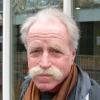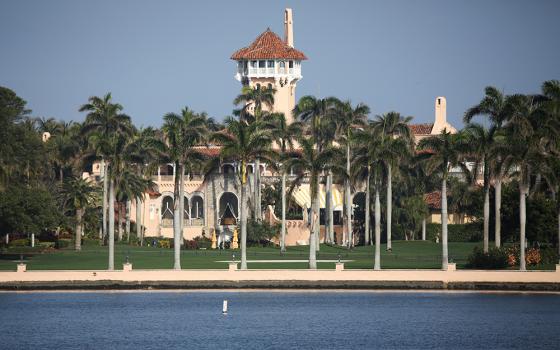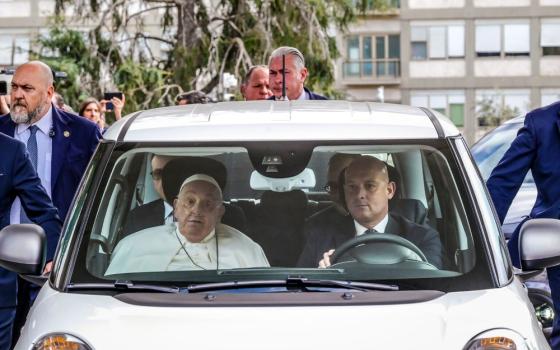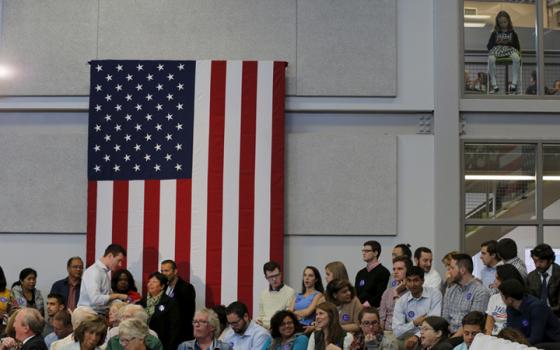
A Dia de los Muertos altar at the Los Angeles Catholic Worker (Courtesy of Los Angeles Catholic Worker)
When my brother Joe died by suicide years ago, our family was devastated. Loved ones gathered around us, and in their presence our somber thoughts of Joe and his death were interspersed with wine, whiskey, camaraderie and community. It occurred to me that Joe's body should be there, right in the midst of us.
My brother was a surfer, swimmer and lifeguard; as such, I thought, Joe's ashes should be cast into the sea. But no, you could not have a party with a dead body, or a burial at sea. Such things were not done in my circles in 1972. I had to manage my grief as best I could, largely in private.
But, thankfully, that is not the end of the story.
Through my decadeslong tenure at the Los Angeles Catholic Worker, I have learned more about death than I ever imagined I would. Many have died at our house from Skid Row and from the AIDS community, guests and community members alike.
Advertisement
We became a team of "death coaches," accompanying these individuals through the final passage into the next phase of life. We have found that community, ritual and prayer help us all be more familiar with death as a part of life, and to be more comfortable with our own inevitable death, which is as natural as being born.
To that end, one of the most impactful rituals we have as a community is Día de los Muertos, the Day of the Dead.
The Day of the Dead is a 3,000-year-old Mexican festival that finds its roots in the Aztec goddess of the dead, Mictecacihuatl, who opens a passageway for the dead to visit with the living. The Spanish who infiltrated Mexico unsuccessfully tried to suppress the festival, but since it persisted, they instead merged it with the Catholic celebration of All Souls' Day.
Today, Día de los Muertos is celebrated on Nov. 2, both a prayerful remembrance and a playful festival, with festivities extending well before and after the actual date. The Day of the Dead is both a mockery of death and a reminder of its own imminent demise. Families go on picnics to the cemetery, decorate the graves of loved ones, create ofrendas, pray and sing to those who have passed on. On many ofrendas, or altars, there is a mirror to remind ourselves that one day our own photograph will be there, too.
When she founded Self Help Graphics & Art in Boyle Heights in 1970, Franciscan Sr. Karen Boccalero and her team of Latino artists brought the Mexican tradition of Día de los Muertos to our neighborhood by building giant outdoor altars, papel picado, paper flowers and huge paper mache calvados. With oversized puppets, clowns and costumes, processions and parades, they danced the celebration of Día de los Muertos into the hearts of the Latino population of East Los Angeles. My wife, Catherine, was inspired, and began making a small Day of the Dead altar for the Catholic Worker each year.
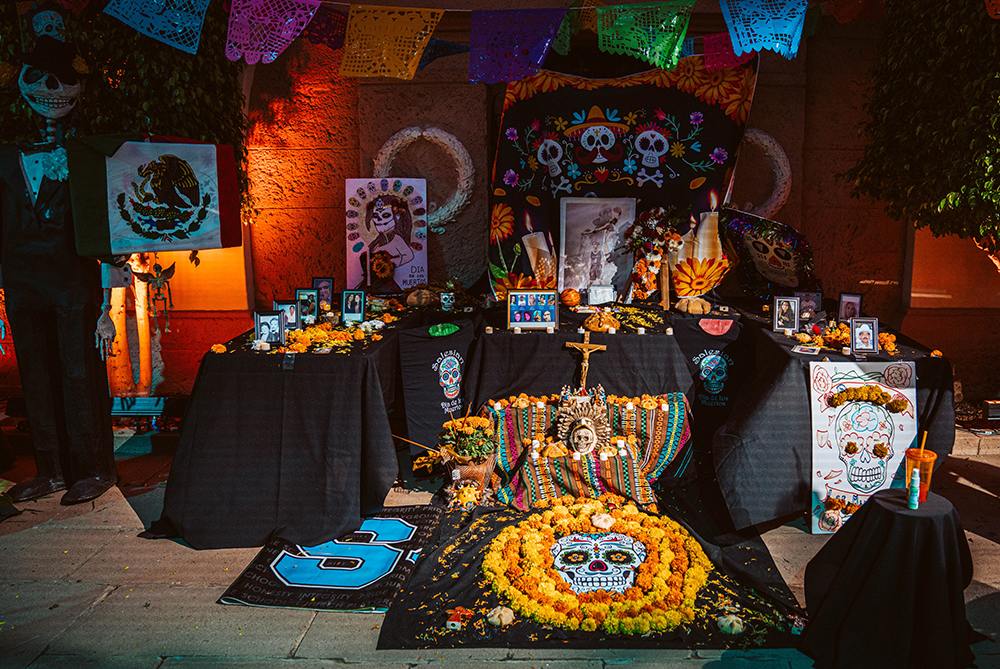
A Día de los Muertos altar is seen at Calvary Cemetery in Los Angeles Nov. 1, 2020. (CNS/Courtesy of Archdiocese of Los Angeles/Colton Machado)
But when Manuel Hernandez joined our community in the 1980s, Día de los Muertos became a weeklong festival. Manuel was a natural artist; he could build a Day of the Dead altar in our house that looked like a Rose Parade float. He built a stage in our side yard and performers joined us: poets, musicians, storytellers, folklórico and Aztec dancers who blessed the altar with sage smoke. The Mujeres de Maiz made tamales for the overflow crowd of hundreds who gathered.
On our altar, there are over a hundred photos of loved ones who have died: relatives, friends, supporters, volunteers, activists and heroes. Dorothy Day, Daniel Berrigan, Cesar Chavez, are all there, along with family members as well as friends from Skid Row. One beloved presence there is Kieran Prather.
When Kieran died one Christmas morning, he was not the first to pass from AIDS in our home. During the AIDS crisis, Kieran and Catherine Morris created a "ministry of presence" to serve food at the AIDS clinic, chatting with patients and staff and listening to their stories. Many patients chose to spend their last days in hospice care at the Catholic Worker house, surrounded by a loving community.
These were people rejected by their families, without economic means, stigmatized by the larger community and sometimes spurned by lovers. These were people who needed to feel valued and embraced. As they entered their final days, there were sometimes tearful reunifications with family and friends. But sometimes not — equally tearful.
When we prayed the rosary around Kieran's death bed as part of our "death liturgy," we remembered events of Kieran's life at each decade: as a young brother in the Trappist Order, his leaving the Order and "coming out" as a gay man, his career as a writer and editor, his arrest for publicly opposing U.S. intervention in El Salvador and joining the Catholic Worker; and, in the final decade, we remembered his ministry of presence to AIDS victims and our hospice ministry.

Aztec dancers participate in the Dia de los Muertos (Day of the Dead) celebration at Calvary Cemetery in Los Angeles Nov. 1, 2015. (CNS/Archdiocese of Los Angeles/Victor Aleman)
We kept Kieran's body with us an extra day, as many folks wanted to visit him. At his request, we had a bottle of his favorite Irish whiskey by his bedside and offered a drink to each visitor. It turned into a joyful Christmas party, with Kieran there among us as we celebrated his life.
The next day we accompanied his body out and into the mortuary van. They brought Kieran's embalmed body back to our house for the funeral at our weekly Catholic Worker liturgy. We kept vigil with Kieran all night. Within the week, Kieran was cremated and his ashes were buried in our garden at the soup kitchen, marked by a large wooden Irish cross carved by an artist friend.
Alongside Kieran's photograph on our Día de los Muertos altar is a picture of my brother Joe, surfing a giant wave in Malibu. Though I may never have imparted his ashes to the sea, I am grateful for a holiday that allows me to hold him close. May he continue to surf that giant wave forever. Our loved ones will never be forgotten.
